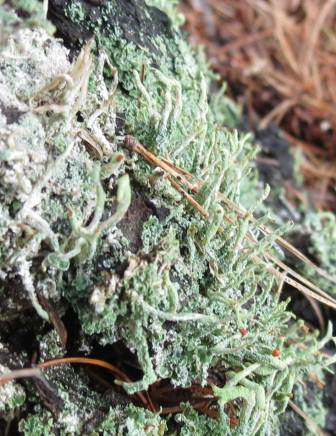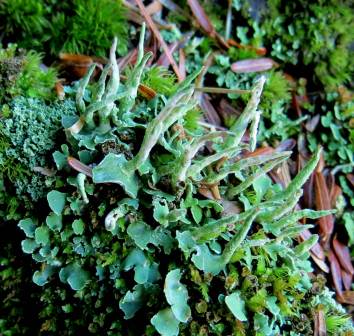Fuzzy staghorn sumac (Rhus typhina) berries look much different after it rains.
This is what staghorn sumac berries look like when they’re dry.
I didn’t think I’d ever see a rolling stone, but this one rolled down a small hill right in front of me. Gravity, sunlight, and ground frost at work.
I learned a long time ago that when you see wood chips all over the ground at the base of a tree it can only mean one thing-a pileated woodpecker has been at work.
Sure enough he / she had drilled these white pines (Pinus strobus) full of holes. Pileated woodpeckers usually drill into trees that are already sick and are often hollow. Their holes are always rectangular with the long axis vertical, and with rounded corners. This tree isn’t long for this world but while it stands owls, ducks, bats, and other birds will live in these holes.
This pussy willow (Salix) seemed to be a bit of an over achiever, with its furry, silvery buds showing in December.
When I was a boy my friends and I used to spend quite a lot of time throwing things at each other. Snowballs, crabapples, dirt clods, acorns-anything that wouldn’t inflict serious damage-were used as ammunition. One favorite source of ammo was wild cucumber vines (Echinocystis lobata.) The fruit has terrible looking spines that are actually soft and harmless until they dry like those in the photo. In this stage the spines are quite prickly, but since they’ve dried out and dropped their seeds they have little weight and that means they are worthless for throwing. Probably a good thing.
The pebbly texture and trumpet shape point to the mealy pixie cup lichen (Cladonia chlorophaea.) Though these lichens resemble golf tees they aren’t even one tenth the size.
Birds don’t seem to be eating the berries of the invasive burning bush (Euonymus alatus) this year and that’s a good thing, because this shrub doesn’t need any help in its mission to take over the understory. Since its introduction from Asia as an ornamental in 1860, Winged euonymus has spread as far south as the gulf coast, north into Canada, and as far west as Illinois.
A bird went to great lengths to get at the goldenrod gall fly larva (Eurosta solidaginis) that was growing inside of this goldenrod gall. Both downy woodpeckers and chickadees have been seen pecking at these galls but there are other predators after the gall fly larva as well. The galls form thick walls to discourage the parasitic Eurytoma gigantean wasp from laying her eggs in the gall chamber. If the wasp is successful when her eggs hatch the wasp larva quickly eat the gall fly larva.
The Engraver Beetle (Ips calligraphus) is called the calligrapher beetle because the damage it causes under the bark of pine trees looks like some form of ancient text. These beetles usually attack weak or dying trees but they can also kill healthy trees by girdling them. Adults bore small holes in the bark and lay eggs in a cavity. Once the larvae emerge from the eggs they make tunnels in the inner bark. Once they stop feeding they will pupate at the end of these tunnels. The pupae then become young adults and fly off to find another tree. These beetles carry spores of a bluestain fungus (Ceratocystis ips) which can grow on the outer sapwood and stop the upward flow of water to the crown.
How did it get so late so soon? It’s night before its afternoon. December is here before it’s June. My goodness how the time has flewn. How did it get so late so soon? ~ Dr. Seuss
Thanks for coming by.












 This is also a beard lichen called bristly beard (Usnea hirta.) many lichens grow so slowly that they can take decades to grow a fraction of an inch. They are thought to be among the oldest living things on earth.
This is also a beard lichen called bristly beard (Usnea hirta.) many lichens grow so slowly that they can take decades to grow a fraction of an inch. They are thought to be among the oldest living things on earth.


 Common powderhorn lichens (Cladonia coniocraea) look just like lipstick powderhorns, but without the red tip. The spores are released from the pointed tip. These were also growing on a decaying log.
Common powderhorn lichens (Cladonia coniocraea) look just like lipstick powderhorns, but without the red tip. The spores are released from the pointed tip. These were also growing on a decaying log.







